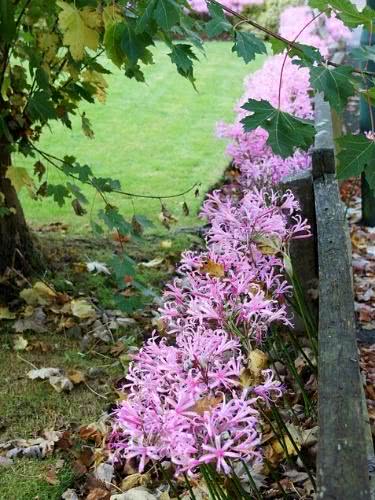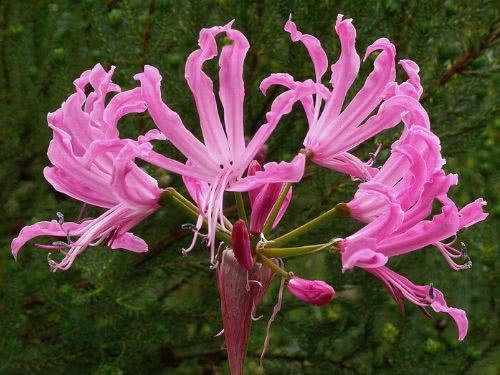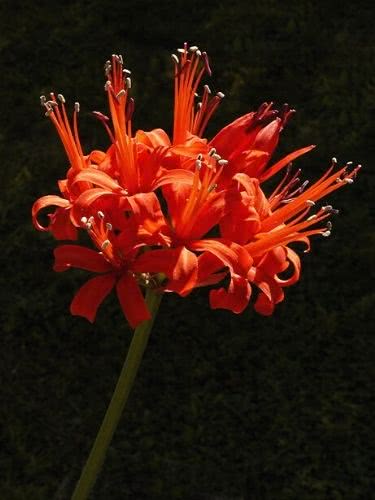The Guernsey lily is the common name for ornamental plants of the genus Nerine, including N. sarniensis and N. bowdenii. The Nerine genus consists of around 30 species, which thrive in rocky and mountainous regions in South Africa. It’s a bulbous, herbaceous, perennial plant with highly ornamental flowers. The bulb has a bulbous bottle shape, measuring about 4.7 to 5.5 inches in diameter.
Its light green leaves are elongated, channeled, and narrow, forming the base of the plant. Inflorescences emerge in late summer and autumn in an umbrella-like cluster on erect stems above the foliage, resembling a “guardian umbrella.”
The flower petals, resembling lilies, are ribbon-like and wavy on the sides, with purple stamens and anthers. Despite distinct colors, both species share similar characteristics. N. bowdenii flowers are bright pink, occasionally white, while N. sarniensis flowers are red with possible variations of orange or salmon hues. Numerous hybrids and cultivars of Nerine are popular in temperate climates. Besides their beauty, these flowers emit a delicate fragrance. The fruit is a subglobose capsule with membranous walls and oval seeds.

Photo by Alwyn Ladell
This bulbous plant can be grown outdoors or indoors, as long as indoor settings receive ample sunlight. It’s commonly planted in groups in gardens, creating masses of vibrant blooms. It also thrives in pots, planters, and miniature gardens, standing out with its ornamental flowering. Ideal for rock gardens or as a border to adorn walls or entryways. Moreover, due to its long-lasting cut flowers, it’s frequently used in stunning arrangements and bouquets.
Guernsey lilies also attract pollinators, adding interest to the garden. Note that they should be planted in spots that won’t be disturbed for an extended period, allowing them to flourish. Maintenance involves removing dry leaves and flower stalks, along with fertilization to encourage robust blooming.

Photo by James Gaither
Cultivate in full sun to partial shade. Thrives in temperate climates and prefers fertile, neutral to slightly acidic, well-draining soil rich in organic matter.
Plant bulbs in late summer, about 1.6 to 2.0 inches deep in prepared soil. Cover with mulch like dry leaves, straw, or pine bark. While considered hardy (tolerates temperatures down to 5°F), the Guernsey lily doesn’t favor hot tropical climates or excessive moisture. Water regularly but cautiously, allowing the soil to almost dry before watering to prevent bulb rot. In winter, bulbs go dormant, and the plant sheds its leaves.
Reduce watering during this time. After flowering, lightly fertilize the plant with liquid nitrogen fertilizer for ample reserves for the next blooming season. It blooms best when bulbs are left undisturbed for at least 4 years. Propagation can be done through division of bulb offsets around the mother plant and by seed, although seed propagation takes 4 to 5 years to initiate flowering.

